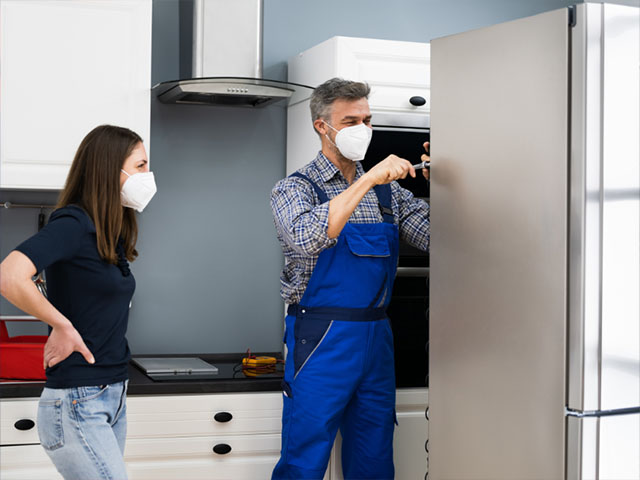Table of Contents
1. Thermostat Malfunction
One of the primary reasons your Viking refrigerator might not be cooling properly is due to a malfunctioning thermostat. The thermostat is responsible for regulating the internal temperature, ensuring that it stays within the correct range. When it becomes faulty, you may notice temperature fluctuations, where the fridge gets too warm or too cold, or it may stop cooling altogether. These issues can prevent the refrigerator from maintaining optimal performance.
Solution: First check if the thermostat is set to the correct temperature. If adjusting the setting doesn’t help, consider replacing the thermostat to restore proper temperature regulation.
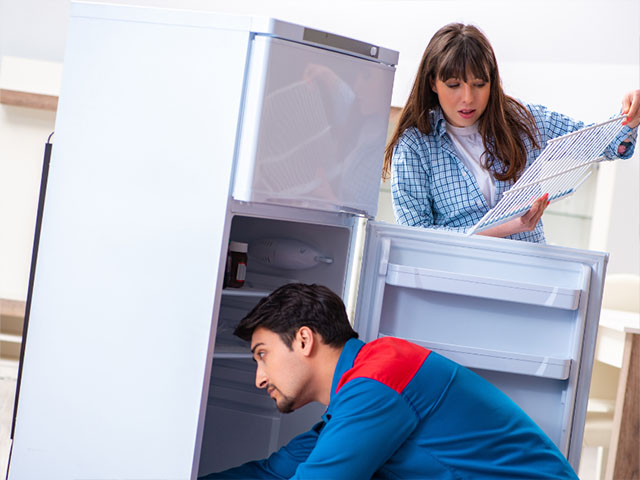
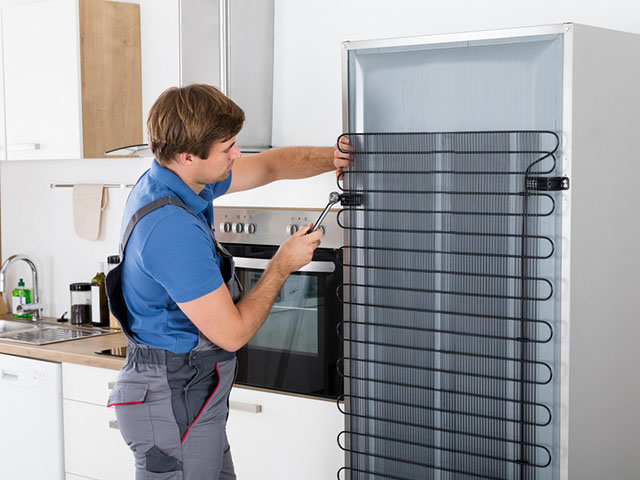
2. Dirty Condenser Coils
Dirty condenser coils are crucial to a refrigerator’s cooling system. They are responsible for dissipating heat from the fridge, allowing the appliance to maintain its cold temperature. However, over time, dust, dirt, and debris can accumulate on these coils, obstructing heat release. This buildup forces the refrigerator to work harder, leading to overheating and potential cooling failure. If left unchecked, it can also increase energy consumption.
Solution: Check the coils at the back or underneath your fridge. If they are dirty, gently clean them with a vacuum or coil cleaning brush. Regular refrigerator maintenance can help restore efficient cooling.
3. Faulty Evaporator Fan Motor
The evaporator fan motor is essential for circulating cold air throughout the refrigerator’s compartments. If it becomes faulty, the refrigerator may experience uneven cooling, leading to items not staying as cold as they should. Signs of a malfunctioning evaporator fan motor include strange noises, such as loud humming or rattling, coming from the back of the fridge. This issue can affect the appliance’s overall cooling performance, resulting in food spoilage.
Solution: The evaporator fan motor should be inspected and, if necessary, replaced. A certified technician from 5 Star Appliance Repair can perform this task to restore the refrigerator’s optimal cooling.

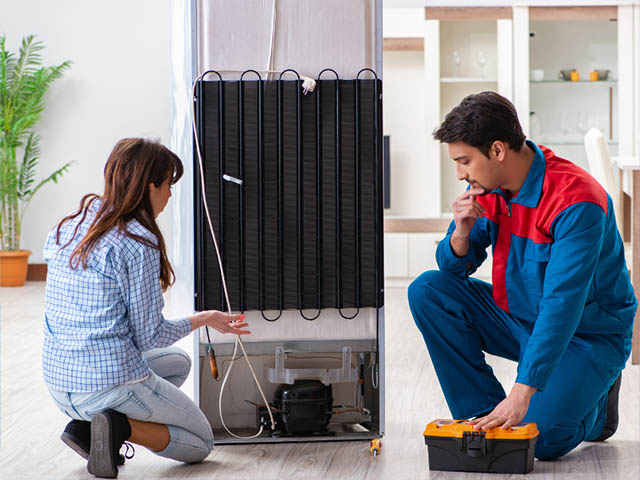
4. Blocked Air Vents
Blocked air vents can disrupt the internal temperature of your Viking refrigerator. Airflow is essential for maintaining consistent cooling throughout the fridge. When food items are placed too close to the vents, it restricts the circulation of cold air, leading to uneven cooling. This can cause some areas to become warmer than others, potentially spoiling food and increasing energy consumption.
Solution: Inspect the refrigerator and make sure no items are blocking the air vents. Rearrange your food to allow space around the vents, ensuring that air can circulate freely for optimal cooling performance.
5. Defective Start Relay
A defective start relay can disrupt your refrigerator’s cooling process by preventing the compressor from running. The start relay helps the compressor kick into gear, enabling the cooling cycle. If it’s faulty, you may hear a clicking sound as the compressor tries to start but fails. This results in the refrigerator not cooling properly, which can lead to food spoilage if not addressed quickly.
Solution: Test the start relay using a multimeter to confirm it’s the source of the problem. If the relay is defective, replacing it is a straightforward fix that will restore your fridge’s cooling function.
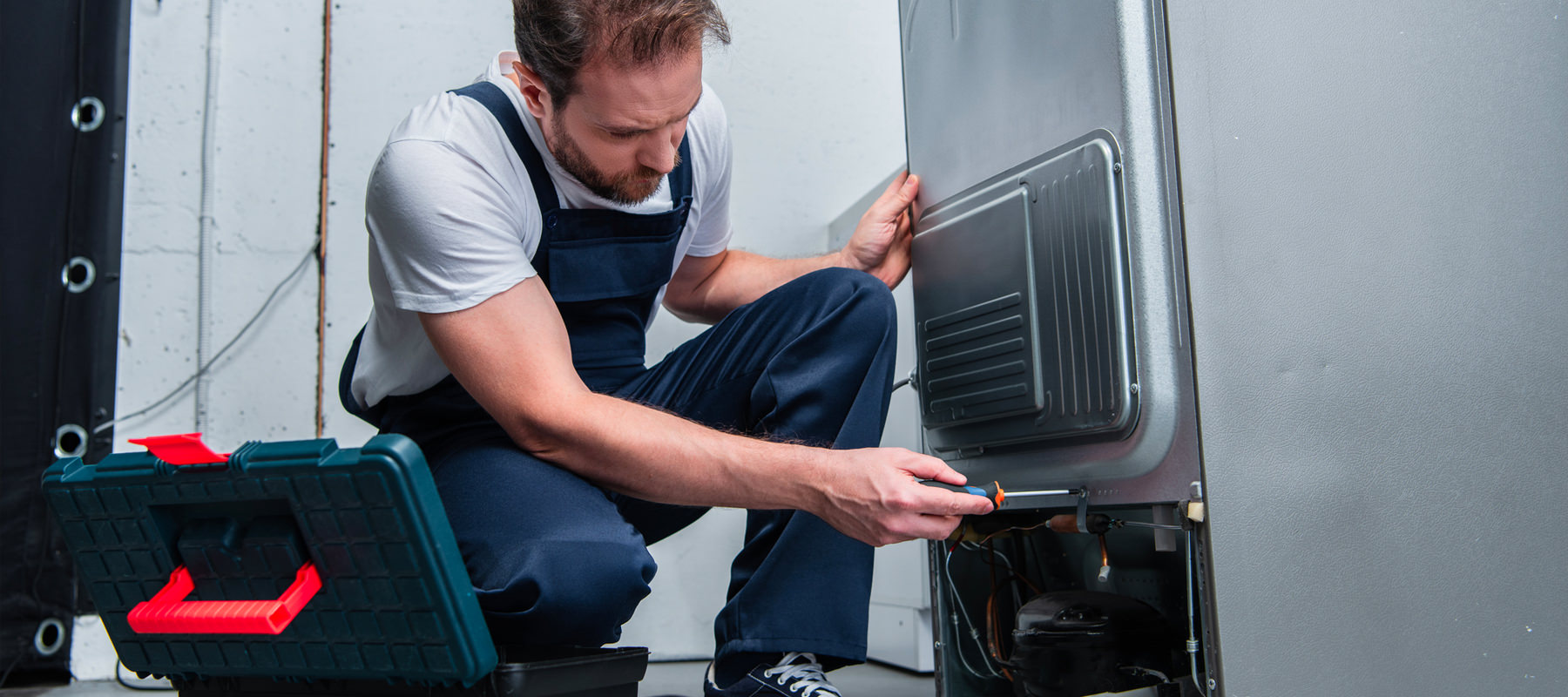
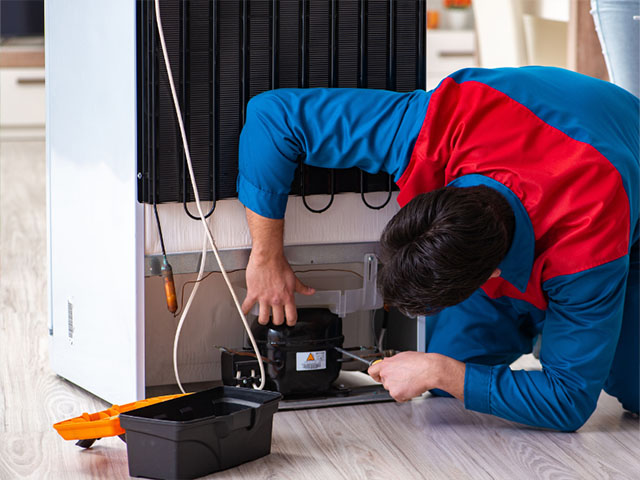
6. Faulty Compressor
The compressor is a pivotal component in a refrigerator’s cooling system. It circulates refrigerant through the coils, which removes heat from inside the appliance, keeping the temperature low. When the compressor becomes faulty, the refrigerator will stop cooling effectively, leading to potential food spoilage. Compressor failure can occur due to wear and tear or mechanical issues, and it’s one of the more costly repairs in a refrigerator.
Solution: If your refrigerator’s compressor is malfunctioning, it’s essential to consult a certified technician. They can diagnose the problem accurately and help determine whether a repair or replacement is the most cost-effective solution.
7. Refrigerant Leak
A refrigerant leak can significantly reduce the cooling efficiency of your Viking refrigerator. The refrigerant plays a key role in the cooling process by absorbing and releasing heat as it moves through the coils. When there’s a leak, the refrigerator may struggle to maintain cold temperatures, leading to issues like a hissing sound, frost buildup, or food not being kept at safe temperatures, despite the unit running continuously.
Solution: It’s essential to call 5 Star Appliance Repair when dealing with refrigerant leaks. These issues require special tools and expertise to locate, repair, and recharge the system properly. By scheduling refrigerator repair with a professional, you ensure your appliance’s safe and efficient operation.

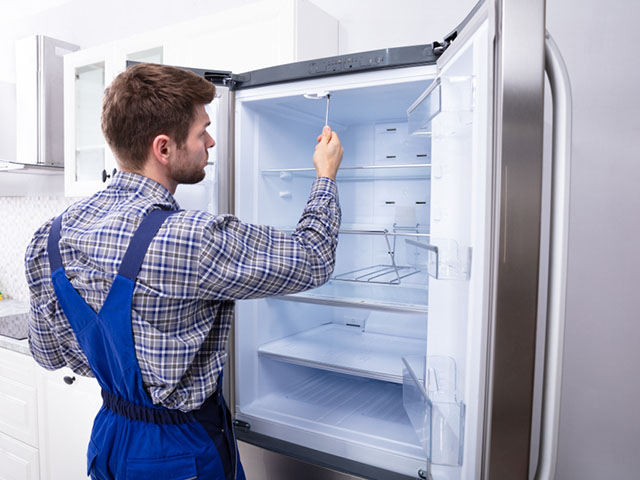
8. Damaged Door Seals
Damaged door seals on your refrigerator can compromise its efficiency. These seals, also known as gaskets, are responsible for creating an airtight barrier that keeps cold air inside and prevents warm air from entering. Over time, seals may become worn, torn, or loose, allowing cool air to escape and making the refrigerator work harder to maintain the right temperature. This can lead to increased energy consumption and inadequate cooling.
Solution: Regularly inspect the door seals for signs of wear or gaps. If you notice any damage, replace the seals promptly to restore the appliance’s cooling efficiency.
9. Malfunctioning Temperature Control Board
The temperature control board regulates the refrigerator’s cooling system by sending signals to key components such as the compressor and fan motors. If this board malfunctions, it may result in irregular cooling or even cause the refrigerator to stop working. Common signs of a faulty temperature control board include temperature inconsistencies and unusual noises.
Solution: It’s best to seek help from 5 Star Appliance Repair. Diagnosing and replacing the control board requires specialized tools and expertise to handle electronic components safely. A certified technician can accurately assess the problem and install a new board to restore proper cooling functionality.
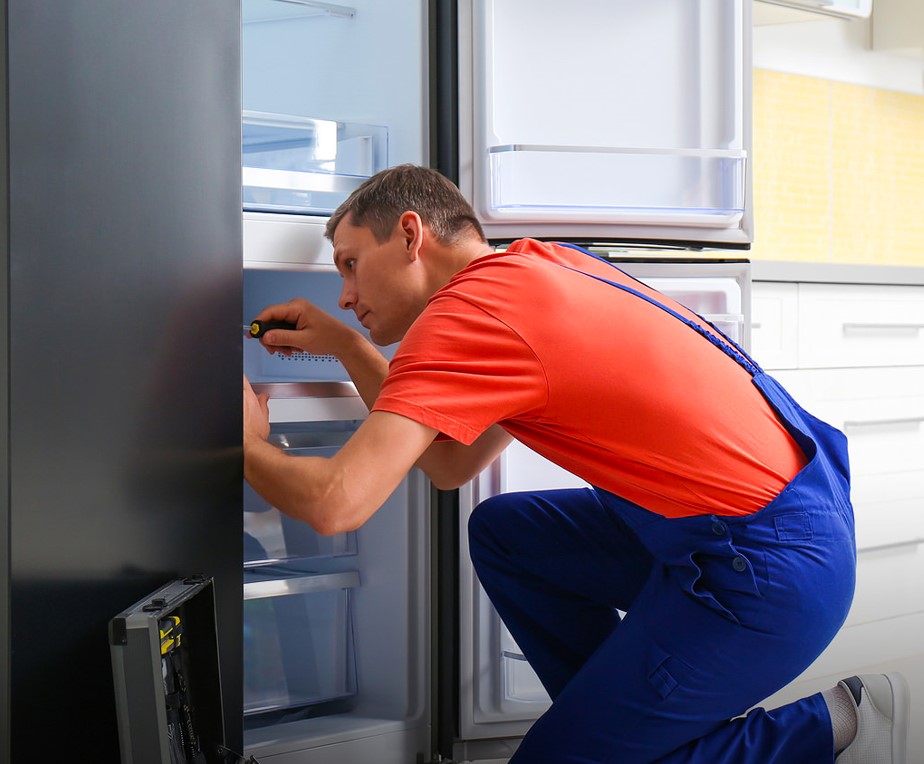

10. Frozen Evaporator Coils
Frozen evaporator coils in a refrigerator can lead to inefficient cooling and frost buildup. This problem typically arises from excessive humidity, a faulty defrost system, or restricted airflow. When evaporator coils freeze over, the fridge struggles to maintain its temperature, often resulting in warm spots despite the unit still running.
Solution: To fix frozen evaporator coils, defrost the refrigerator by turning it off and allowing the ice to melt. Check for proper airflow by ensuring vents aren’t blocked and replace air filters if needed. If the issue continues, it’s best to call a licensed technician for further refrigerator inspection and repair.
11. Problem with Defrost System
The defrost system in a Viking refrigerator prevents frost from accumulating on the evaporator coils. If this system malfunctions, frost can build up, blocking airflow and preventing the refrigerator from cooling properly. Key components of the defrost system include the defrost thermostat, timer, and heater. When any of these components fail, frost remains on the coils, leading to a warmer refrigerator interior.
Solution: Inspect the defrost system components. Replace any faulty parts, such as a broken defrost thermostat or malfunctioning heater. This will restore proper airflow, ensuring the Viking refrigerator maintains the right temperature.
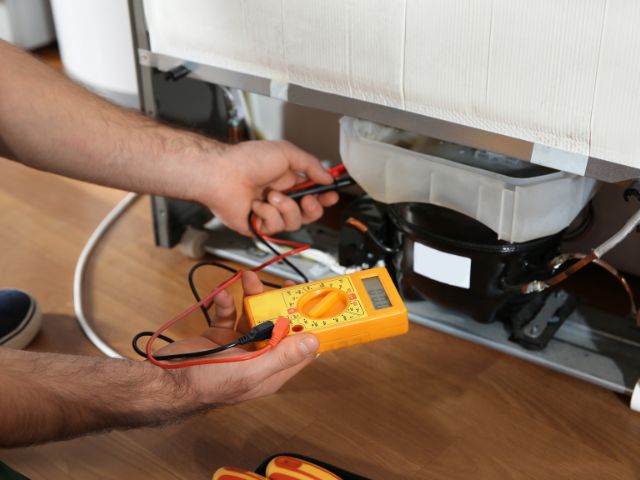
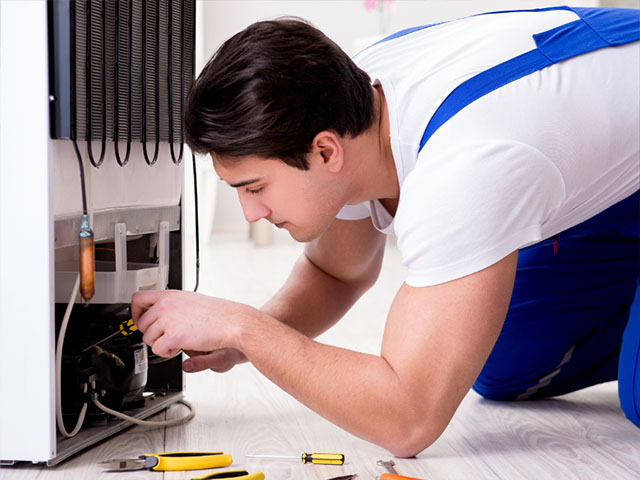
12. Electrical Issues
Electrical problems, such as blown fuses, faulty wiring, or tripped circuit breakers, can lead to your refrigerator losing power and ceasing to cool effectively. Inspecting your home’s electrical panel for tripped breakers is essential, as this may indicate an overload or short circuit. Additionally, checking the refrigerator’s power cord for visible damage can help identify potential issues.
Solution: If you discover any problems with the electrical system, it’s crucial to seek the help of a professional. A qualified technician can repair or replace faulty wiring and ensure that your refrigerator receives the adequate power it needs to operate efficiently.
Conclusion
A malfunctioning Viking refrigerator can disrupt your daily routine and lead to food spoilage if not addressed promptly. Whether the issue is a thermostat malfunction, dirty condenser coils, or a refrigerant leak, identifying the problem early is key to restoring your fridge’s performance. Routine maintenance, like cleaning coils and checking door seals, can prevent many issues, but sometimes professional assistance is necessary. If you’re facing more complex problems, such as a faulty compressor or electrical issues, it’s best to call in experts.
For reliable and efficient appliance repair services, trust 5 Star Appliance Repair to provide expert solutions and ensure your refrigerator runs smoothly once again. Don’t wait—schedule an appliance repair today and keep your fridge in top condition.
FAQs
Why is my Viking refrigerator not cooling properly?
Common causes include a malfunctioning thermostat, dirty condenser coils, or a refrigerant leak. Identifying the specific issue early can help restore your fridge’s performance and prevent food spoilage.
How do dirty condenser coils affect my refrigerator's cooling?
Dirty condenser coils can obstruct heat release, forcing the fridge to work harder and eventually overheat. Regular cleaning of the coils helps maintain efficient cooling.
What should I do if my refrigerator’s compressor is faulty?
Why is my Viking refrigerator not cooling properly?
Common causes include a malfunctioning thermostat, dirty condenser coils, or a refrigerant leak. Identifying the specific issue early can help restore your fridge’s performance and prevent food spoilage.

